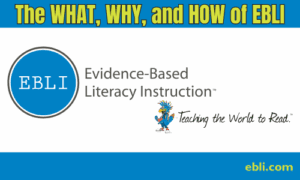Twice in my life I’ve had the pleasure of living on tropical islands. For 3 years in the 1980s we lived at the Navy base in Guantanamo Bay, Cuba. In the ’90s, we lived for 2 years on Guam, which is located between Hawaii and Japan.
Guam is one of 15 of the Mariana Islands, an archipelago (otherwise known as an island group or chain). When we lived there, the only other island in the archipelago we visited was Saipan, a stronghold of the Japanese military after they captured it early in WWII. The history of this island during that period is both fascinating and heartbreaking. Tinian is the island in the chain where the aircraft Enola Gay departed from, carrying the atomic bomb that was dropped on Hiroshima and led to the end of WWII in the Pacific theater.
INTEGRATE LITERACY INSTRUCTION
So, what do these islands have to do with literacy instruction? It is not about the history (as a history buff, I can’t help but to share a bit of that) but about the arrangement of islands in a group. All island chains have landmasses that are in rather close proximity to each other but are separated by water. They are connected by vicinity but not really in any other way. In my experience, literacy instruction often operates in a similar manner.
Literacy is comprised of reading, writing, and spelling. Reading has five essential components: phonemic awareness, phonics, vocabulary, fluency, and comprehension. Proficiency in these components is needed to become highly literate (along with spelling, writing, and handwriting). Research of these components has taken place over many decades and is derived from a variety of disciplines including, but not limited to, cognitive psychology, neurology, education, and linguistics. Currently, this research is commonly referred to as the Science of Reading – SoR for short.
Most classroom instruction includes many-to-all of these components to some degree and in a variety of ways. However, these components are typically taught in isolation from each other in classrooms and remedial instruction. Much like with islands, these literacy instructional components often don’t ‘touch each other.’ Teachers and students alike can have confusion about the benefit of these various pieces of instruction. Their purpose and how they connect to reading and writing is not readily apparent.
Let me give you some examples. Phonemic awareness is the ability to manipulate sounds: blending (or pushing sounds together), segmenting (or pulling sounds apart), or manipulating/moving sounds around in words (ex: what is slip if you don’t say the /s/?). Research is unequivocal in the importance of including instruction in these skills for students to become automatic, accurate readers. In recent years, many educators provide daily instruction in phonemic awareness, especially for emerging readers. Rarely in classrooms, however, is the connection of this instruction tied to phonics or use of letters. Because of this, the effectiveness of blending, segmenting, and phoneme manipulation is diluted. (P.S. To learn more about how to effectively teach phonemic awareness, be sure to check out this webinar.)
Here is an example of the aforementioned dilution in application: If a child is reading a book containing the sentence ‘This soup is great.’ they may likely misread some of the words. If they’ve been taught to use the skill of phoneme substitution (taking out a sound and replacing it with a different sound) while reading words, they would have a strategy to self-correct the error. Misreading ‘soup’ as ‘soap’ is understandable. However, the child would need to pull out the sound /oa/ and replace it with the sound /oo/ to correct the word. If they’ve only been taught phoneme manipulation in a whole group without looking at letters or a word, they would not know to apply the skill this way. Additionally, their teacher or parent would not know to provide guidance to assist them in doing so.
Phonics instruction is commonly taught on an island, which is to say it’s taught separately from reading and writing instruction. Words are made up of speech sounds said together and phonics is matching these speech sounds to the letter(s) that represent them in print. This is the foundation of all reading instruction and figuring out this speech to print code is critical to accurate reading that leads to comprehension (see this blog and this webinar for more on this).
I’m often approached by schools looking for a ‘phonics piece’ to supplement their current curriculum. There is a prevalent misconception that adding some phonics instruction in isolation onto current practices that deemphasize applying phonics knowledge in reading and spelling will result in improved literacy performance. When students don’t understand that the isolated instruction is intended to be used when applying the code in reading and spelling, they don’t transfer what was learned. It would be similar to teaching a child to dribble a basketball but never having them aware that they would use this skill to actually play a game.
Vocabulary instruction is often an island of its own, too. Sometimes, but not always, it is connected to the text or content students will be reading that contains the words. Rarely is the phonics (the sound to letter correspondence) or morphology (prefix, suffix, root words) discussed or taught explicitly. The instruction of the code and word parts is imperative in order to apply this to other words that contain the same patterns. If this isn’t taught or pointed out, students rarely make the connection. The application of the vocabulary taught, by seeing the word(s) when reading or using them in writing while being aware of the spelling and morphological patterns, is the most efficient way to get the words and meaning retained.
Comprehension is the point of reading, just like living in a house is the point in building it. However, comprehension is also typically taught on an island. In the majority of classrooms, students are fast tracked to comprehension because that is the end goal. The components of reading that lead to comprehension are often just touched upon and sometimes almost completely left out. This has tragic consequences for many children.
As students get older and their comprehension falls further and further behind, teachers work hard and furiously to find comprehension strategies to help them. The problem is that low level comprehension is a symptom, not a cause. Comprehension struggles are almost always the symptom of weak foundational skills in reading such as inability to read the words accurately, poor understanding of vocabulary, or lack of background knowledge. Teaching comprehension strategies as an attempt to strengthen comprehension is like moving furniture around in a house to fix the walls and keep the roof from falling in. It is not going to work because it isn’t addressing the true problem.
What needs to be done to combine these literacy islands together so that they are not isolated from one another? Have a bigger picture goal of instruction beyond just checking off that a skill, concept, or standard was covered. With all instructional practices ask yourself, “How am I doing what I’m doing and why am I doing it that way?” If the answer is not to advance the reading, writing, and spelling proficiency of students (and an understanding of how that is being accomplished), then it is imperative to reexamine your practices and adjust them. The goal of explicit, multi-modal, and purposeful instruction is to help students most effectively and efficiently apply that instruction to reading, writing, and spelling. Each of us has more to learn and room to grow as far as our delivery of instructional practices. When we are open to doing this and motivated to continue to expand our knowledge and improve our practices, it is a win/win situation for everyone!
We want to hear from you in the comments – how are you integrating literacy instructional practices with your students?





